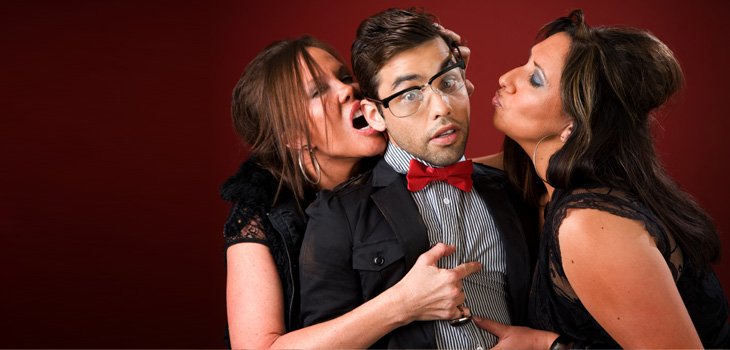In recent years, the term “MILF” has become a cultural buzzword, symbolizing the allure and fascination surrounding older women. Originally a colloquial term, it has transcended its roots to become a significant part of modern discourse on sexuality, relationships, and aging. But what exactly is it about older women that captivates so many?
Is it their confidence, experience, or the societal shift in perceptions of beauty and desirability? This article delves into the psychology behind the “MILF” phenomenon, its representation in popular culture, and the broader implications of age-gap relationships. By exploring these facets, we aim to understand why older women are increasingly celebrated and what this means for our evolving societal norms.
The Allure of Older Women
The fascination with older women, often referred to as “MILFs,” is not a new phenomenon. Historically, older women have been revered for their wisdom, nurturing qualities, and life experience. However, in contemporary society, this admiration has taken on a more overtly sexual dimension. The term “MILF,” which stands for “Mother I’d Like to Fuck,” has become a shorthand for the desirability of older women, particularly those who are mothers.
One of the key factors contributing to the allure of older women is their confidence. As women age, they often become more comfortable in their own skin, embracing their bodies and sexuality in ways that younger women may not yet have explored. This self-assuredness is incredibly attractive, as it signals a level of maturity and self-awareness that many find appealing.
Additionally, older women are often seen as more emotionally stable and less likely to engage in the drama that can sometimes characterize relationships with younger partners. This emotional maturity can make for more fulfilling and less tumultuous relationships, further enhancing their appeal.
Exploring the Psychology of the “Milf”
The psychology behind the “MILF” phenomenon is complex and multifaceted. At its core, it reflects a broader societal shift in how we perceive aging and beauty. For decades, youth was idealized, and older women were often relegated to the sidelines in favor of younger, more “conventionally attractive” counterparts. However, as societal norms have evolved, so too have our perceptions of beauty.
One psychological explanation for the appeal of older women is the concept of “sexual capital.” As women age, they accumulate a wealth of life experience, which can translate into a more nuanced and fulfilling sexual relationship. This is particularly appealing to younger men, who may be drawn to the idea of a partner who can guide them both emotionally and sexually.
Another factor is the “forbidden fruit” aspect of the MILF archetype. The idea of being with an older woman, particularly one who is a mother, carries a certain taboo that can be thrilling for some. This taboo is often amplified by media portrayals of older women as sexually experienced and confident, further fueling the fantasy.
Age Gap Relationships: Challenges and Rewards
Age-gap relationships, particularly those involving older women and younger men, have become increasingly common in recent years. While these relationships can be incredibly rewarding, they are not without their challenges.
One of the primary challenges is societal judgment. Despite the growing acceptance of age-gap relationships, there is still a stigma attached to couples with a significant age difference. This can lead to feelings of isolation or insecurity, particularly for the older partner.
However, the rewards of such relationships can far outweigh the challenges. Older women often bring a level of emotional maturity and stability to the relationship, which can be incredibly grounding for a younger partner. Additionally, the life experience that older women bring to the table can lead to a more fulfilling and well-rounded partnership.
The Role of Media in Shaping Perceptions of Older Women
The media has played a significant role in shaping perceptions of older women, particularly in the context of the “MILF” phenomenon. From films and television shows to literature and pornography, older women are increasingly being portrayed as desirable and sexually confident.
One of the most notable examples of this is the rise of the “cougar” archetype in popular culture. The term “cougar” is often used to describe an older woman who pursues younger men, and it has become a staple of modern media. Shows like Cougar Town and films like The Graduate have helped to popularize this archetype, further cementing the idea of older women as sexually desirable.
However, it’s important to note that these portrayals are not always positive. In some cases, older women are reduced to mere sexual objects, with little regard for their individuality or complexity. This can perpetuate harmful stereotypes and contribute to the objectification of older women.
Milfs in Popular Culture
The “MILF” phenomenon has permeated popular culture in a variety of ways, from film and television to literature and pornography. These portrayals have played a significant role in shaping societal perceptions of older women, often blurring the line between fantasy and reality.
Milfs in Film, Television, and Literature
In film and television, the “MILF” archetype has become a recurring trope, often used to add a layer of sexual tension or intrigue to a storyline. One of the most iconic examples of this is the character of Mrs. Robinson in The Graduate. Played by Anne Bancroft, Mrs. Robinson is the quintessential “MILF,” a sexually confident older woman who seduces a younger man.
More recently, shows like Desperate Housewives and Sex and the City have featured older female characters who are unapologetically sexual and confident. These portrayals have helped to normalize the idea of older women as desirable and sexually active, challenging traditional notions of aging and beauty.
In literature, the “MILF” archetype has also made its mark. Books like The Bridges of Madison County and The Age of Innocence explore the complexities of relationships between older women and younger men, often delving into the emotional and psychological aspects of these dynamics.
The “Milf” as a Trope in Pornography
In the world of pornography, the “MILF” trope is one of the most popular and enduring categories. This genre typically features older women, often portrayed as mothers, who engage in sexual relationships with younger men. The appeal of this trope lies in its combination of taboo and fantasy, offering viewers a glimpse into a world that is often considered off-limits.
However, it’s important to recognize that these portrayals are not always reflective of reality. In many cases, the women depicted in “MILF” pornography are not actually mothers, and the scenarios are often exaggerated or unrealistic. This can contribute to a distorted view of older women and their sexuality, perpetuating harmful stereotypes and reinforcing the objectification of women.
See Also: Exploring Cuckold, Femdom, and Unique Fantasies
Conclusion
The “MILF” phenomenon is a complex and multifaceted cultural trend that reflects broader shifts in societal perceptions of aging, beauty, and sexuality. While the term itself may be rooted in a somewhat crude and objectifying context, it has also opened up new avenues for exploring the desirability and appeal of older women.
As we continue to challenge traditional notions of beauty and aging, it’s important to recognize the value and complexity of older women, both in and out of the bedroom. By celebrating their confidence, experience, and emotional maturity, we can move towards a more inclusive and nuanced understanding of what it means to be desirable at any age.
FAQs
1. What does “MILF” stand for?
“MILF” stands for “Mother I’d Like to Fuck,” a term used to describe an older woman, typically a mother, who is considered sexually attractive.
2. Why are older women often referred to as “MILFs”?
Older women are often referred to as “MILFs” due to their perceived sexual desirability, confidence, and life experience, which many find appealing.
3. Are age-gap relationships involving older women and younger men common?
Yes, age-gap relationships involving older women and younger men have become increasingly common, reflecting broader societal shifts in perceptions of aging and relationships.
4. How does the media influence perceptions of older women?
The media plays a significant role in shaping perceptions of older women, often portraying them as sexually confident and desirable, though sometimes in ways that can be reductive or objectifying.
5. What are some challenges of age-gap relationships?
Challenges of age-gap relationships can include societal judgment, differences in life stages, and potential power dynamics, though these relationships can also be incredibly rewarding and fulfilling.











 © 2025 Marketer • Built with
© 2025 Marketer • Built with